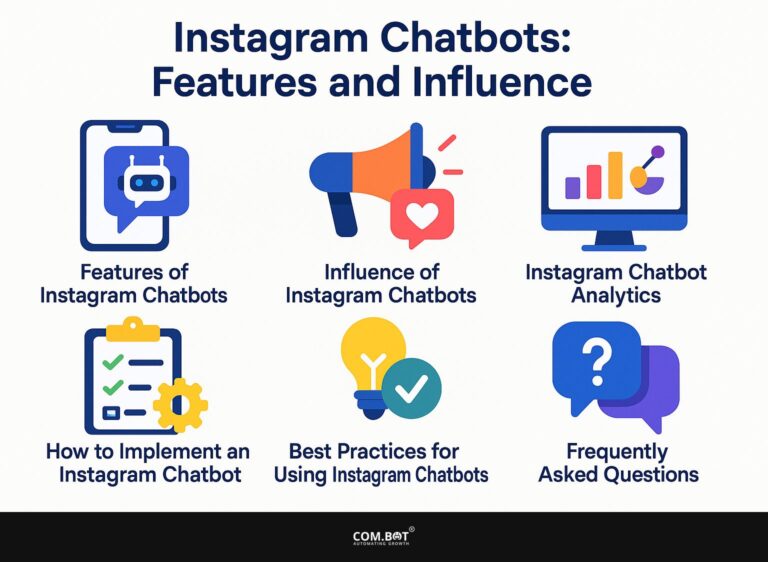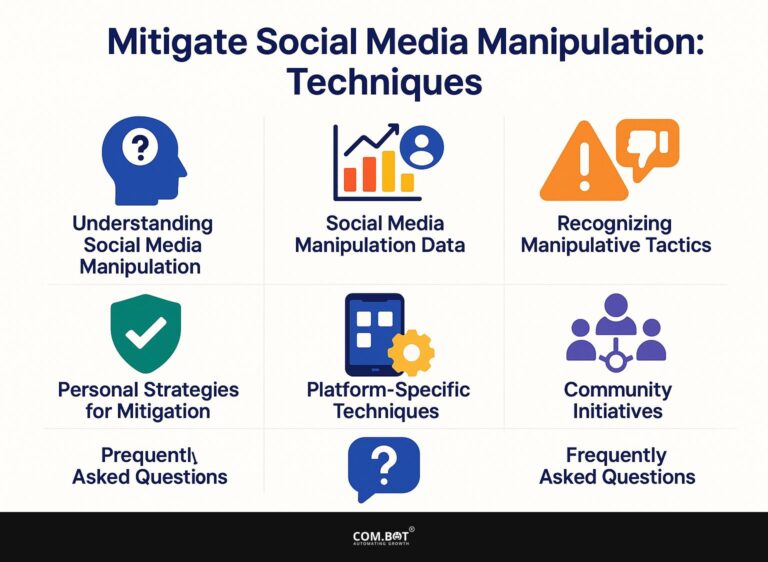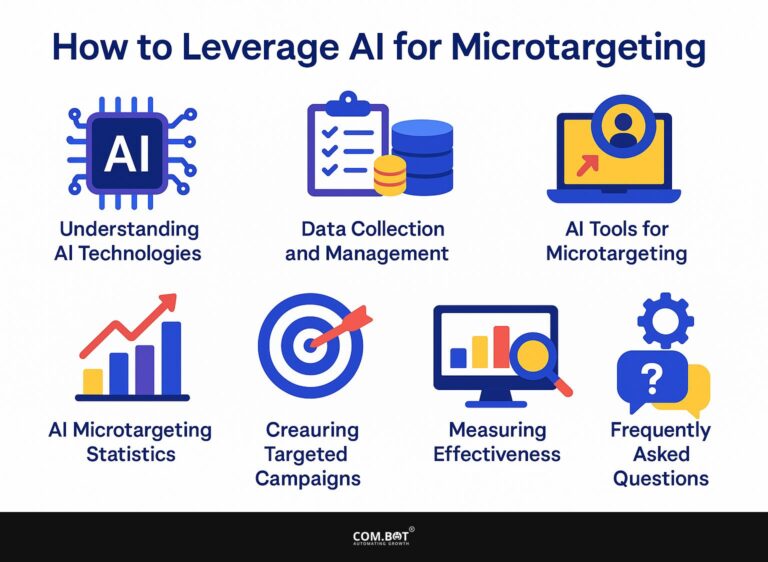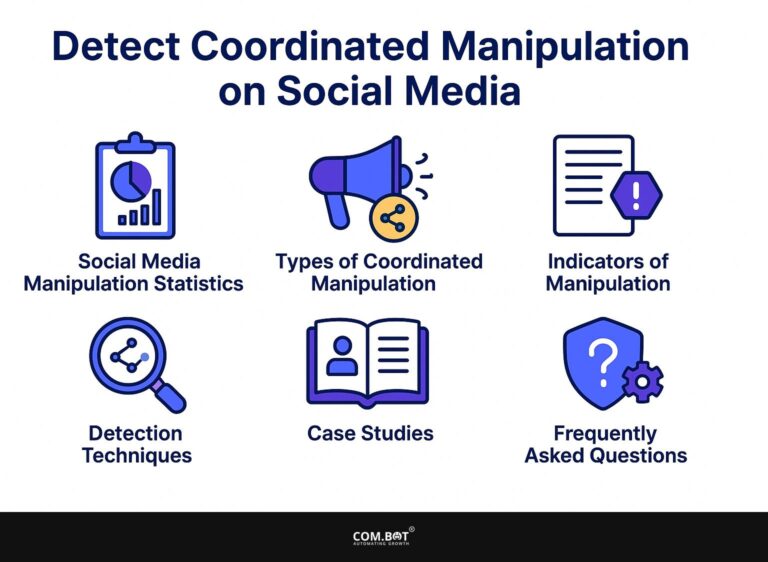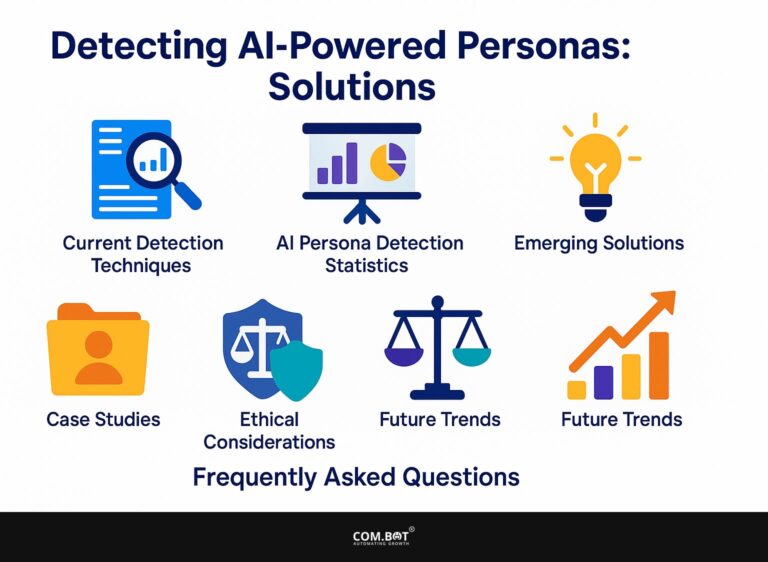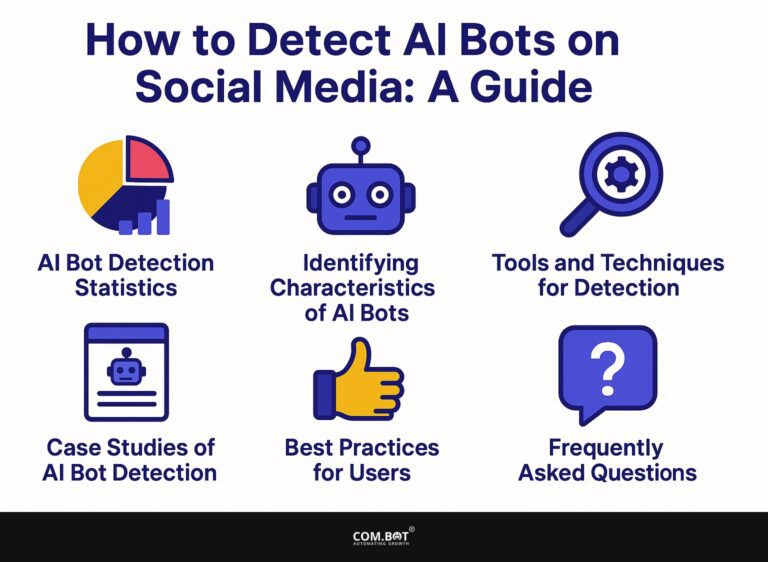How to Combat Social Bot Influence in Business
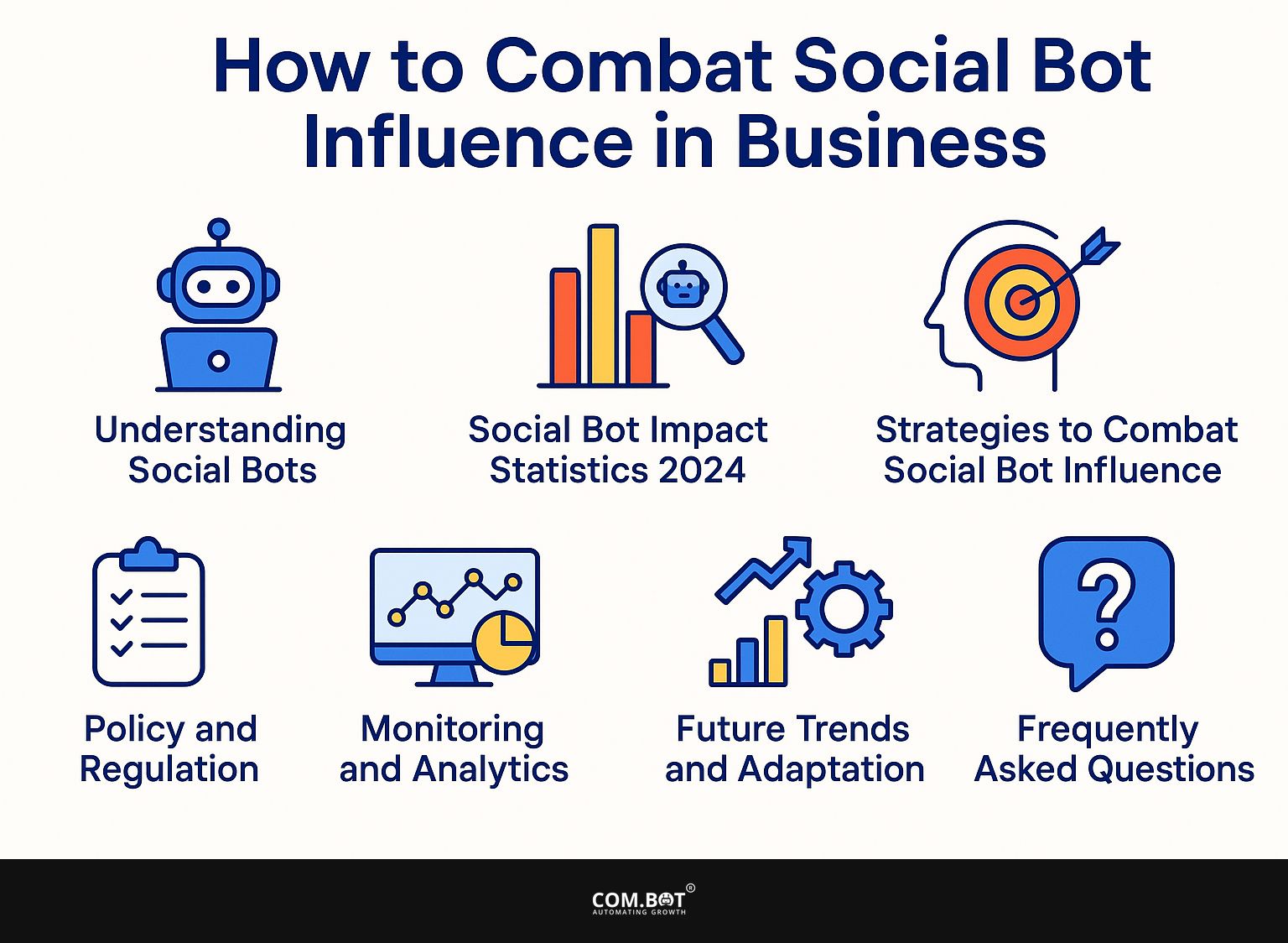
On the internet now, social media bots have a lot of control. They affect what people think and how they use online platforms. For brands and businesses, knowing about these automated systems is important to reduce their harmful effects.
This article will guide you through identifying bot activity, implementing effective strategies to combat their influence, and enhancing your brand’s authenticity in the face of these challenges. Give your business the tools to succeed on social media.
Key Takeaways:
- Be aware of the impact of social bots on business and understand the different types of bots that exist.
- Use tools and tactics to identify and combat bot activity, including enhancing digital security and engaging with authentic users.
- Make sure you follow the law and create internal rules to control and keep track of how social bots affect business.
- 1 Understanding Social Bots
- 2 Social Bot Impact Statistics 2024
- 3 Identifying Social Bot Activity
- 4 Strategies to Combat Social Bot Influence
- 5 Policy and Regulation
- 6 Monitoring and Analytics
- 7 Future Trends and Adaptation
- 8 Frequently Asked Questions
- 8.1 1. How can social bot influence affect my business?
- 8.2 2. What are the main tactics used by social bots to influence businesses?
- 8.3 3. How can I detect and identify social bots in my business’s online presence?
- 8.4 4. What steps can I take to combat social bot influence in my business?
- 8.5 5. What are the potential consequences of not addressing social bot influence in my business?
- 8.6 6. How can I protect my business from social bot influence in the long term?
Understanding Social Bots
Social bots, like those that create content or run with some automation, play a key role in influencing online interactions.
They often impact what people think and how users experience social platforms. One of the most fascinating applications of this technology is detailed in our insights on Com.bot and its Conversational Commerce Bot, showcasing the innovative ways bots transform user engagement and commerce.
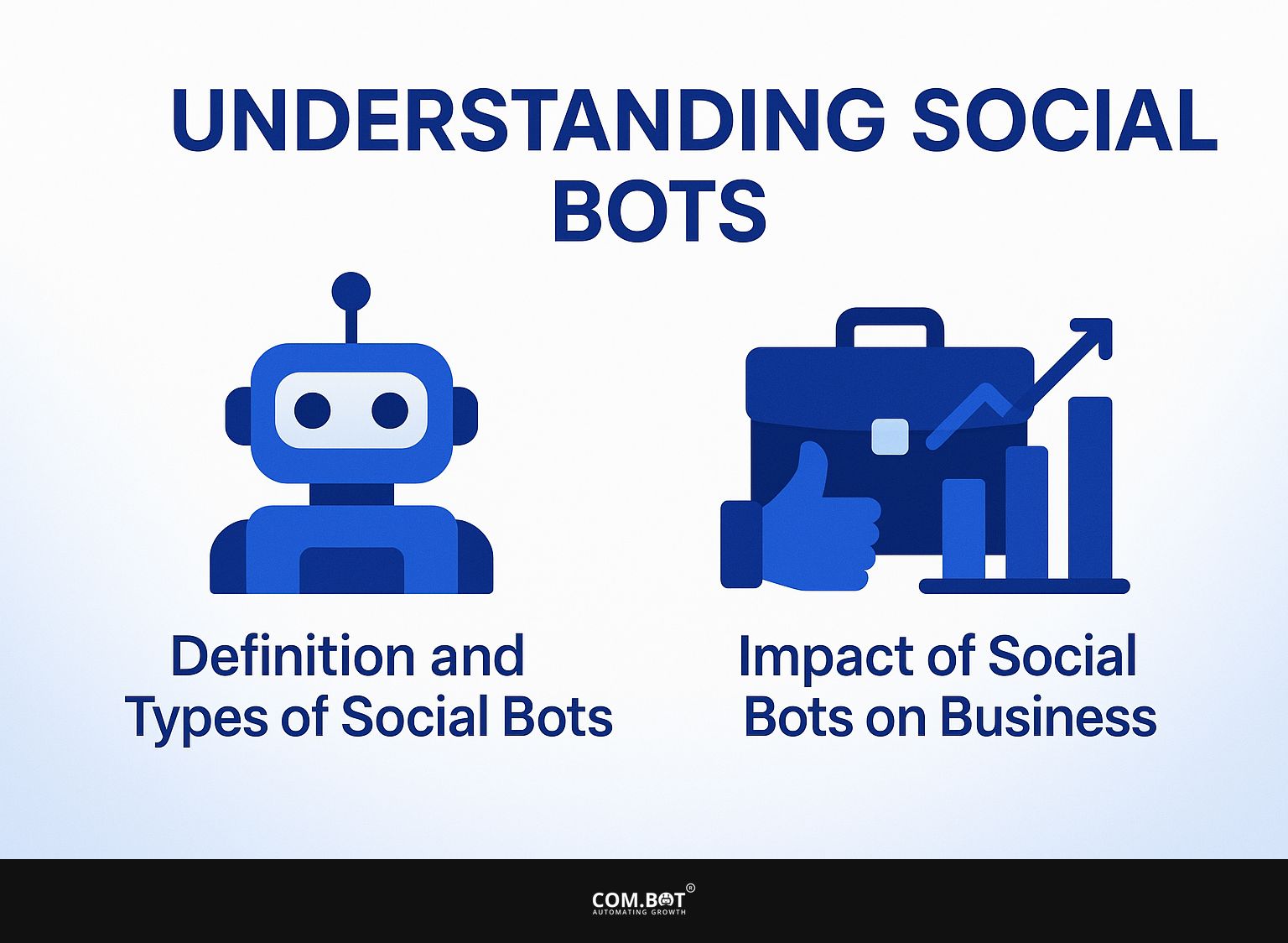
1. Definition and Types of Social Bots
Social bots can be categorized into three main types:
- Spam bots, which promote disinformation and fake accounts;
- Sock puppet accounts that masquerade as real users;
- Malicious bots that spread misinformation during political events.
Spam bots primarily drive up engagement metrics by flooding platforms with fake news and advertisements, skewing user perception and trust. For example, a spam bot could increase the visibility of a sensationalized article, causing false information to spread quickly through shares.
Sock puppet accounts often manipulate discourse by pretending to be users with genuine views, which can distort public sentiment on hot topics.
Malicious bots, particularly during elections, can react to trends instantly, spreading false narratives and creating a chaotic information environment. Knowing these changes is key for social media plans and internet abilities.
2. Impact of Social Bots on Business
Businesses face significant challenges due to social bots, which can manipulate public perception, leading to adverse effects on brand integrity and online reputation.
For instance, companies like Starbucks have faced backlash from bots spreading false information about their practices, which can cause public outrage and sales drops. The 2016 U.S. presidential election highlighted the role of social bots in spreading misinformation, directly impacting voter perceptions.
To mitigate these risks, businesses can employ monitoring tools such as Brandwatch or Hootsuite to track online sentiment and quickly address inaccuracies. Creating strong social media rules can help teams handle bot problems well and protect the brand’s image.
Those interested in understanding how AI bots can influence platforms might find our insights on AI Bots on Instagram valuable.
Social Bot Impact Statistics 2024
Social Bot Impact Statistics 2024
Bad Bot Traffic Analysis: Global Bot Traffic
Bad Bot Traffic Analysis: Industry-Specific Bot Traffic
Bad Bot Traffic Analysis: Regional Bad Bot Traffic
Bad Bot Traffic Analysis: Bot Impact in 2023
The Social Bot Impact Statistics 2024 The dataset offers a detailed view of how bot traffic is impacting different industries and areas around the world. Knowing these measurements is important for companies and security experts to reduce possible dangers linked to bot activities.
Bad Bot Traffic Analysis reveals that bots constitute 50% of global internet traffic, with 33% attributed to bad bots. These malicious bots can perform harmful activities such as data scraping, cyber-attacks, and unauthorized data access, posing significant threats to online security.
- Industry-Specific Bot Traffic: The technology sector experiences the highest bot traffic at 76%, probably because it changes often and contains important information. Gaming and E-commerce industries follow with 57% and 65%, respectively, highlighting their attractiveness to bots for exploiting digital assets and transactions. The Social Media industry sees 46% in bot traffic, affecting user engagement and data integrity. Meanwhile, Financial Services face 45% bot traffic, endangering sensitive financial data.
- Regional Bad Bot Traffic: Ireland and Germany top the list with 71% and 68% bad bot traffic, respectively, possibly due to their strong industrial and technological environments. In the United States, bad bot traffic accounts for 34%, indicating a significant but comparatively lower threat level. Mexico faces 43% bad bot traffic, presenting substantial challenges to its digital economy.
The section on Bot Impact in 2023 shows a dramatic 432% More scraping is happening, highlighting the strong efforts to gather important details. Account takeover attacks represent 10%, posing threats to individual and corporate security through unauthorized access. Furthermore, 44% of API endpoints were targeted, highlighting the need for stronger cybersecurity steps to safeguard data exchanges.
The data shows that bots have a widespread impact across different areas and locations. Stakeholders should focus on security measures and technology to protect digital assets and operations from the increasing threat of harmful bot activities.
Identifying Social Bot Activity
Finding social bot activity is important for preserving real conversations and protecting brand reputation on social media platforms.
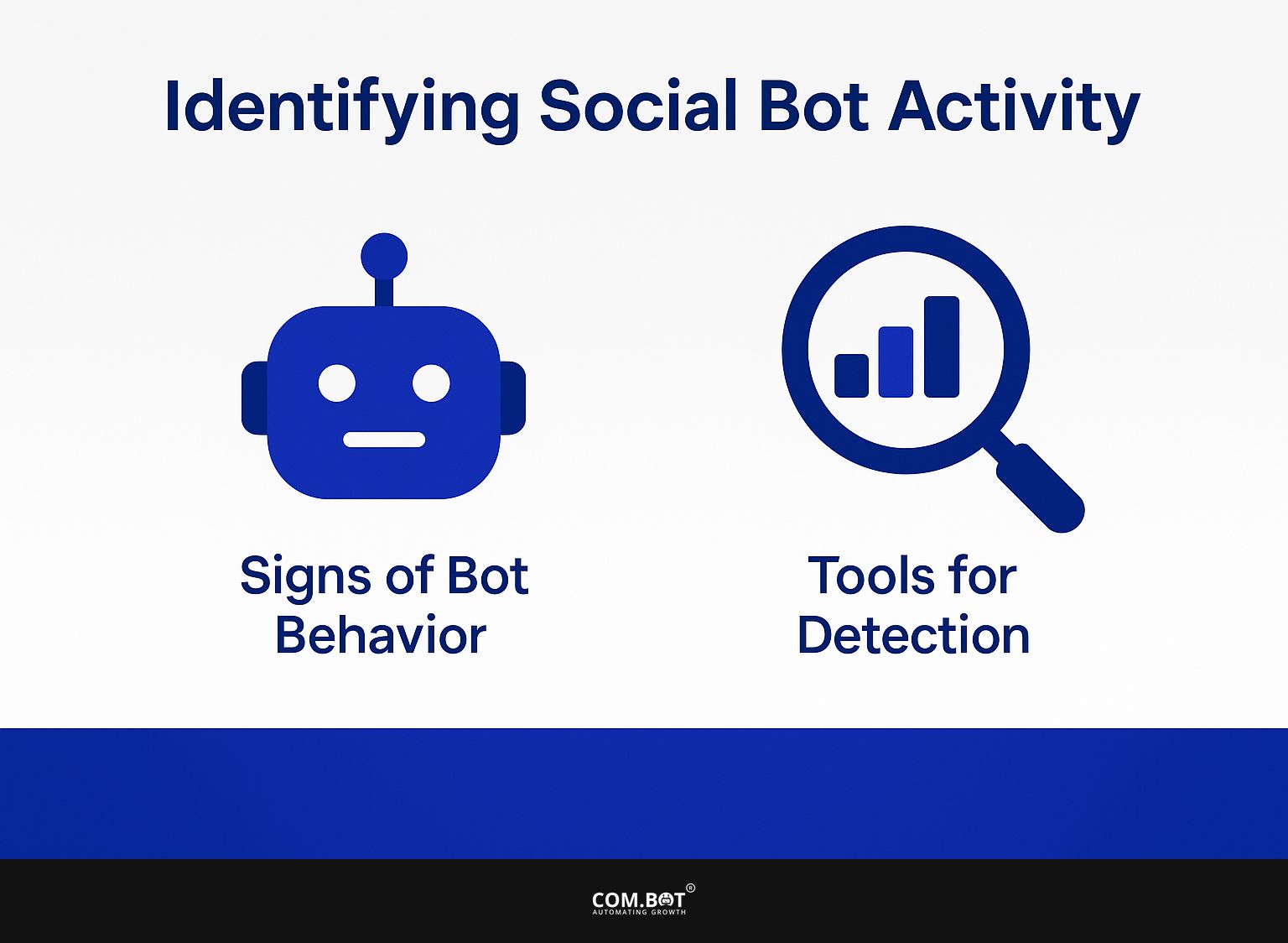
1. Signs of Bot Behavior
Businesses should look for specific signs of bot behavior, such as unusual spikes in engagement metrics, repetitive comments, and rapid-fire posting patterns that deviate from typical user interaction.
Other indicators include posting at odd hours, often inconsistent with user activity, and a lack of genuine interaction, like unoriginal responses or generic messages.
For example, if a brand usually receives comments during business hours but suddenly sees activity at midnight, it could signal bot interference. Analyzing engagement spread can reveal clusters of comments or likes within minutes. These signs can fill up feeds and reduce user trust while damaging brand reputation, highlighting the need for careful moderation.
2. Tools for Detection
To fight against the risk posed by social bots, marketers can use different detection tools, such as Cloudflare’s bot management system and Pew Research Center’s resources for social media analysis.
Three notable bot detection tools include:
- Cloudflare Bot Management For $200/month, this tool identifies whether your site visitors are real people or automated bots, protecting your site from harmful automated activities.
- Distil Networks Business pricing is customized based on their needs, offering complete protection against bots, including CAPTCHA challenges.
- Pew Research Center’s Social Media Analysis Available at no cost and great for studying, it provides research on bot behavior and their impact on public discussions.
Using these tools in your social media plan can increase interaction numbers and make your audience more genuine.
Strategies to Combat Social Bot Influence
To reduce the impact of social bots, businesses need to implement proactive measures that focus on digital security and encourage genuine interaction with real users. For those looking to enhance these strategies, leveraging AI in social media can significantly aid in the detection and prevention of scams.
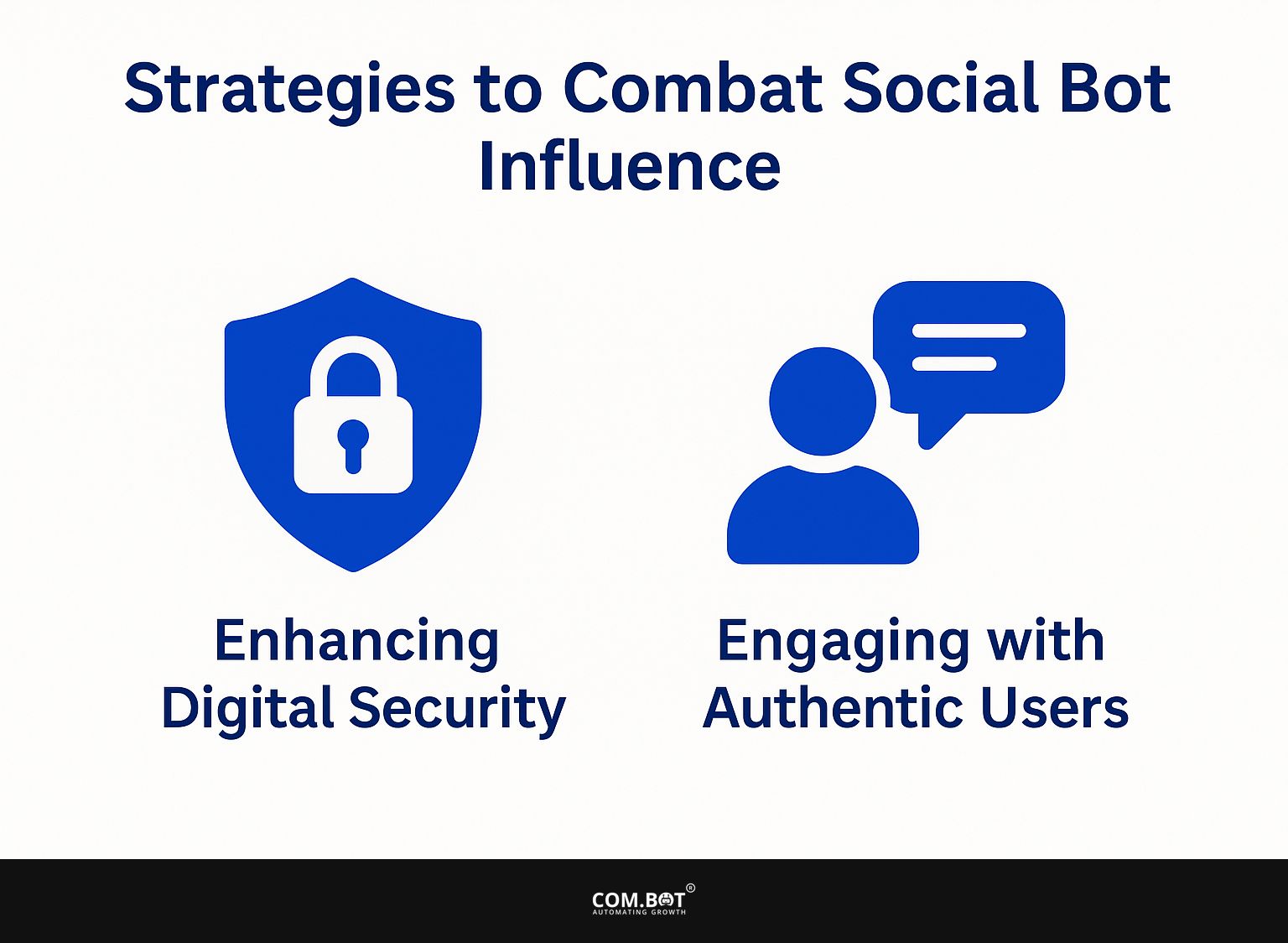
1. Enhancing Digital Security
Improving online security means using strong methods like two-factor authentication and advanced systems for managing bots to protect against unauthorized access and harmful bots.
Along with these foundational steps, businesses can adopt the following security measures:
- AI-Powered Customer Service Tools Use tools like Zendesk or Drift to watch live conversations for any signs of unusual behavior.
- Intrusion Detection Systems (IDS) Install systems like Snort or Suricata to detect and alert you of potential breaches.
- Regular Software Updates Make sure all software is updated to guard against security weaknesses.
- Employee Training Train employees regularly on security practices.
- Data Encryption Encrypt sensitive information to add an additional layer of protection against data breaches.
2. Engaging with Authentic Users
Creating connections with actual users requires methods that encourage real interaction, like custom messages and feedback from the community. To deepen user engagement, implement tactics like hosting monthly Q&A sessions that invite open dialogue, encouraging users to submit questions in advance.
Use social media polls to find out what users are interested in or prefer, encouraging teamwork. Acknowledging key participants with public praise or gifts encourages involvement and strengthens a dedicated group.
Using tools like Mentimeter for polls and Discord for Q&A sessions can make these interactions better and help users feel valued, which builds brand loyalty.
Policy and Regulation
Clear laws are important for handling problems caused by social bots, making users responsible, and creating a safer online space.
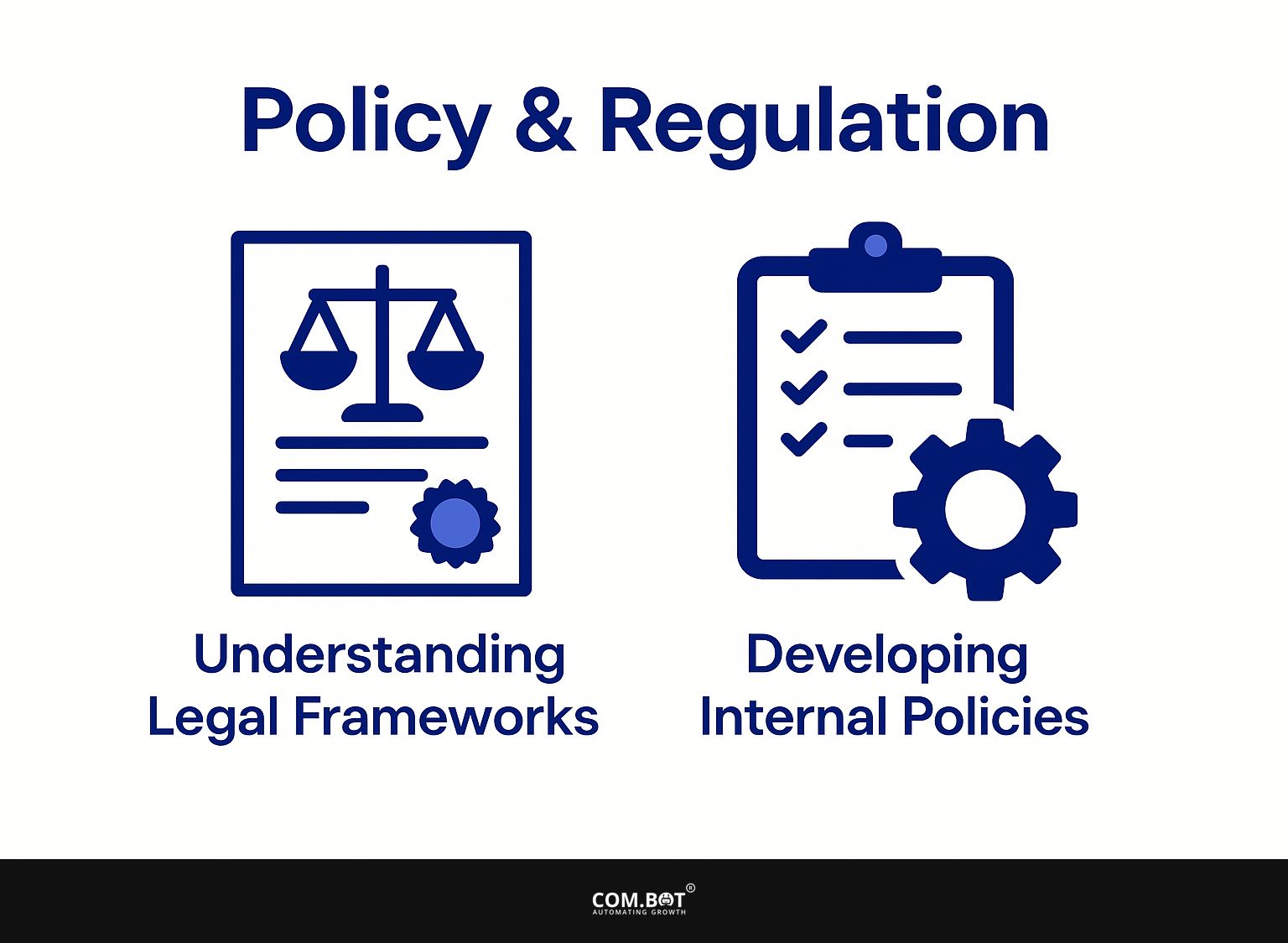
1. Understanding Legal Frameworks
Knowing about Section 230 and how it affects social media sites is important. It defines what legal duties companies have and shields them from being blamed for content that users create.
Brands must follow GDPR and CCPA rules, which control how personal data is used and protect privacy rights. Implementing compliance strategies like regular data audits and staff training on privacy laws can safeguard your brand.
Consider using tools like OneTrust for privacy compliance management and Hootsuite for monitoring user interactions. Proactively establishing and enforcing community guidelines can also mitigate risks. When brands create a safe and law-abiding online space, they protect themselves legally and gain the trust of their audience.
2. Developing Internal Policies
Making internal rules that focus on honest marketing and clear communication can help brands deal with social media challenges and protect their reputation from issues caused by automated accounts.
- To create effective internal policies, start with clear content moderation guidelines. Establish criteria for acceptable content, including specific dos and don’ts.
- Next, set up a way to check if a user is real-think about using tools like Google reCAPTCHA or two-factor authentication.
- Create a complete training program for employees that covers how to identify and respond to bots. This program should include case studies or simulations to prepare staff for real-world scenarios.
These actions help create an open setting that builds consumer confidence.
Monitoring and Analytics
Good tracking and data analysis are necessary to spot bot activity and see how it affects user interaction numbers and the overall well-being of the brand. As mentioned, understanding the impact of AI bots is crucial, especially in areas like Instagram, where they can significantly influence public opinion, as outlined in our analysis of AI bots’ influence on Instagram.
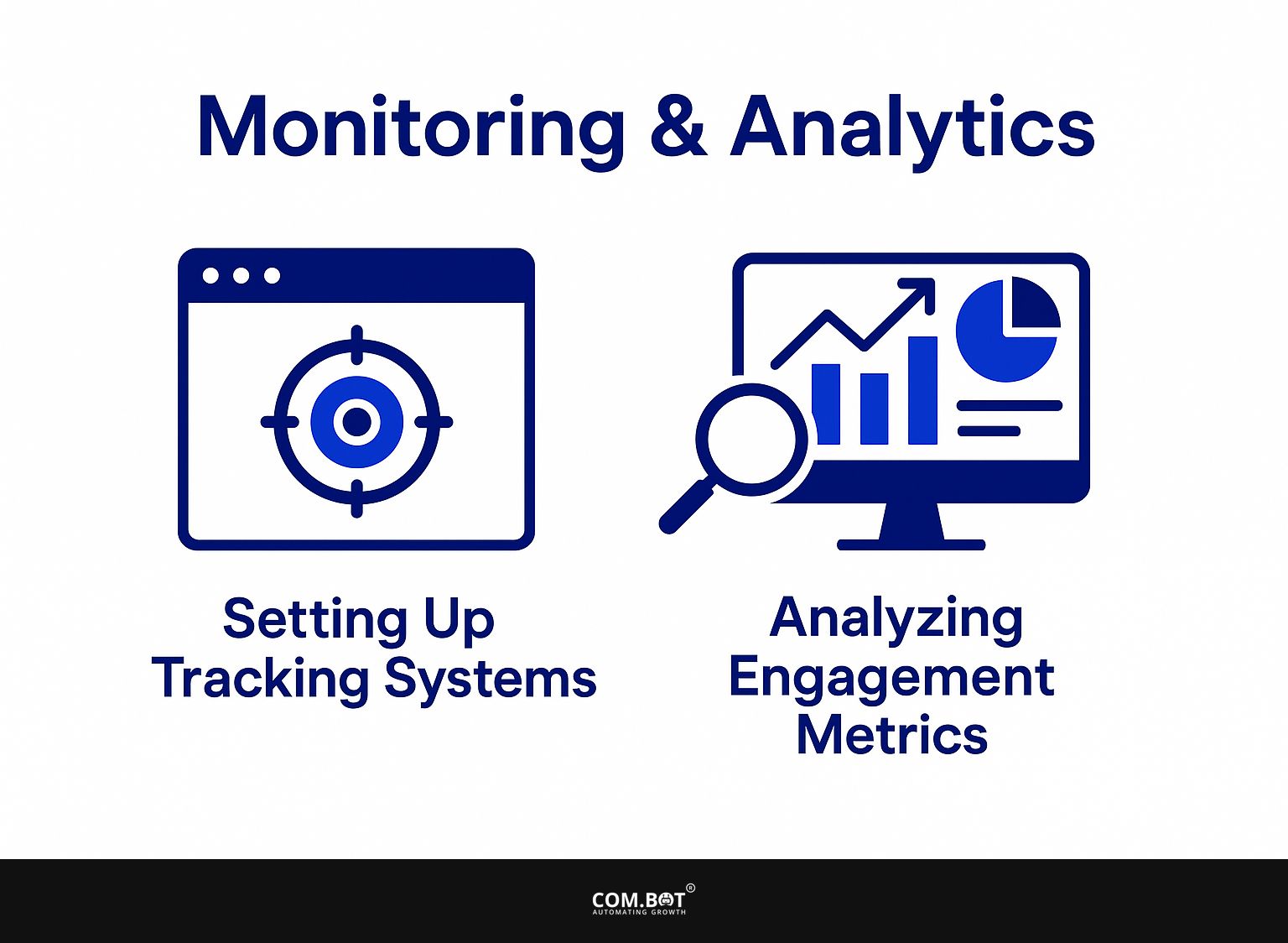
1. Setting Up Tracking Systems
Using tools such as Google Analytics and Hootsuite to set up strong tracking systems allows brands to keep an eye on engagement activities and spot possible bot issues.
To effectively implement a tracking system, start by defining specific goals such as increasing website traffic or enhancing social media interactions. Then, identify key metrics: for websites, focus on bounce rate and average session duration; for social media, track engagement rates and click-through ratios.
Use Google Analytics for website statistics and Hootsuite for social media data, helping you review real-time information. Set up regular reporting intervals-weekly or monthly-to assess performance and adjust strategies as needed, ensuring continuous improvement and timely responses to engagement trends.
2. Analyzing Engagement Metrics
Regularly analyzing engagement metrics allows brands to discern patterns that may indicate bot activity, enabling timely responses to protect user sentiment and brand integrity. To effectively track these metrics, focus on three key areas: clicks, shares, and comments.
Use tools like Google Analytics for clicks, which helps identify sudden spikes or drops in traffic. For social media, platforms such as Buffer or Hootsuite can monitor shares and engagement rates.
Set up alerts for strange comment patterns, which may indicate spam. By closely monitoring these metrics and acting on anomalies, brands can safeguard their interactions and maintain a genuine connection with their audience.
Future Trends and Adaptation
As technology changes, brands need to stay updated on new trends in social bot actions and change their strategies to keep real connections and user trust. For an extensive analysis of this trend, our comprehensive study on AI Bots for Customer Support examines how they can enhance customer satisfaction while maintaining user trust.
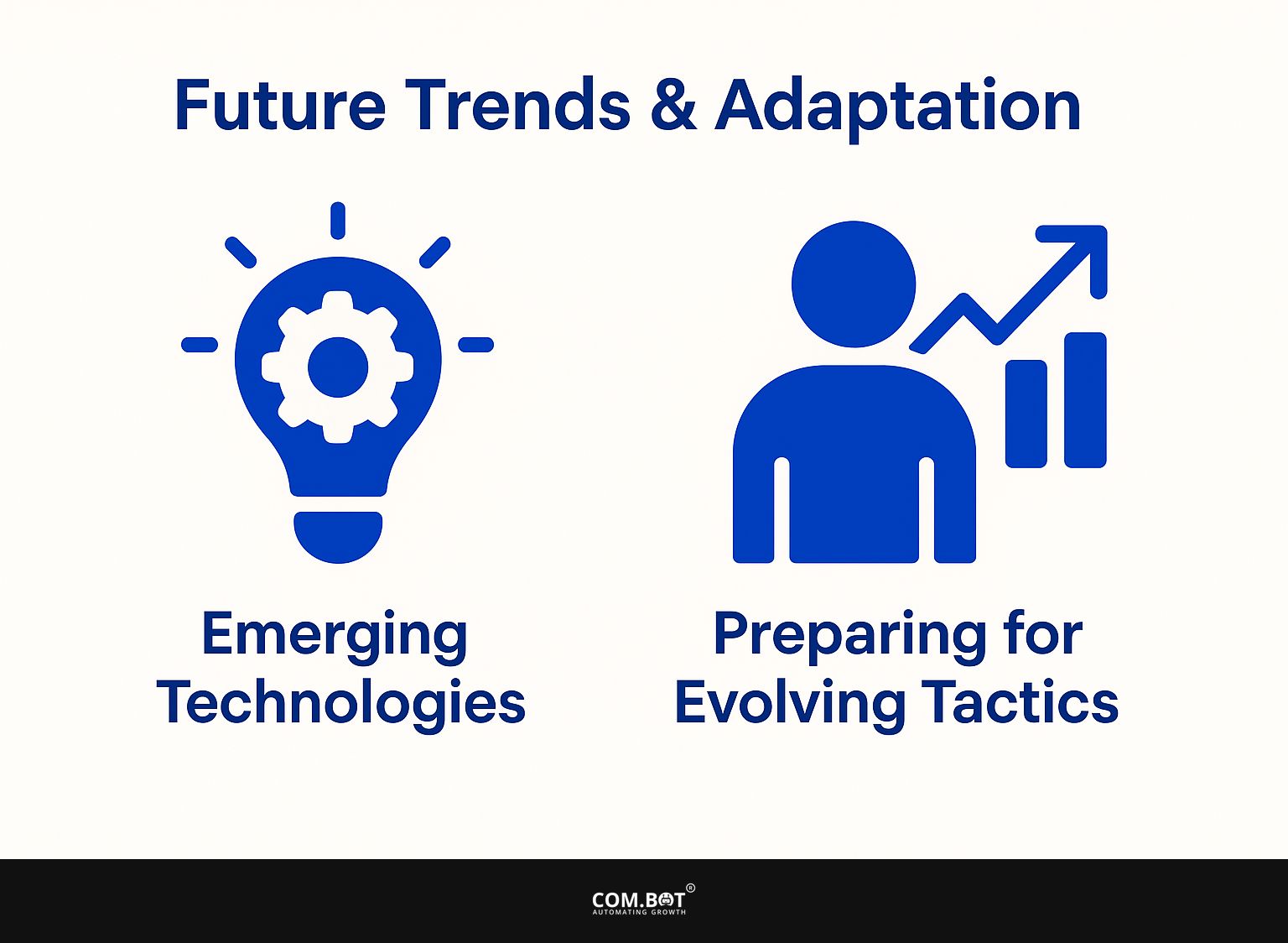
1. Emerging Technologies
New technologies, like AI-based customer service tools, are important for improving user interactions and reducing the effect of bots on digital marketing efforts.
For example, using AI chatbots can make customer service more efficient by giving quick answers to common questions and cutting down on wait times. Platforms like Drift and Intercom allow businesses to integrate these chatbots seamlessly into their websites.
Services like Cloudflare or Distil Networks help keep your site safe by blocking harmful automated traffic, making it more secure. By using these technologies together, companies can make user interaction better and protect against bot attacks, resulting in a more unique and safe experience.
2. Preparing for Evolving Tactics
Brands need to get ready for changes in how social bots operate. These bots use new algorithms and machine learning methods to imitate the actions of real users.
To stay ahead, brands should implement continuous staff training focused on identifying bot activity. This can include workshops on recognizing suspicious patterns or behaviors in user interactions.
Regularly updating monitoring systems is important; tools like Brandwatch or Hootsuite can help track social media trends and unusual patterns.
Reading recent studies on bot actions-such as those from the Pew Research Center or scholarly journals-helps teams improve their plans and react well. A flexible method will strengthen defenses against these more complex bots.
Frequently Asked Questions
Social bot influence can negatively impact businesses by spreading false information, manipulating customer opinions, and creating a negative brand image.
Social bots employ methods like false reviews, fake followers, automated messages, and taking over accounts to affect companies.
You can detect social bots by analyzing their patterns of activity, such as high frequency of posts and interactions, and lack of personalization in content. There are also various online tools available to help identify social bots.
To combat social bot influence, you can regularly monitor your online presence, report any suspicious accounts, and implement security measures such as strong password policies and two-factor authentication.
If ignored, social bot influence can harm your business’s reputation, lower customer trust, and result in a loss of sales and revenue.
To protect your business in the long term, it is important to stay updated on the latest tactics used by social bots and regularly review and update your security measures. It can also be helpful to educate employees and customers on how to identify and report social bot activity.
